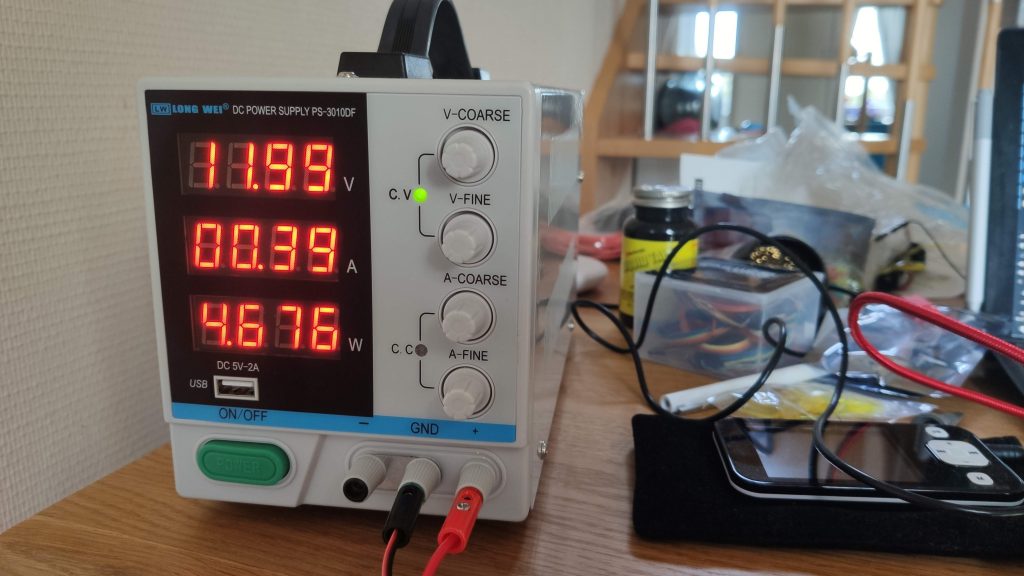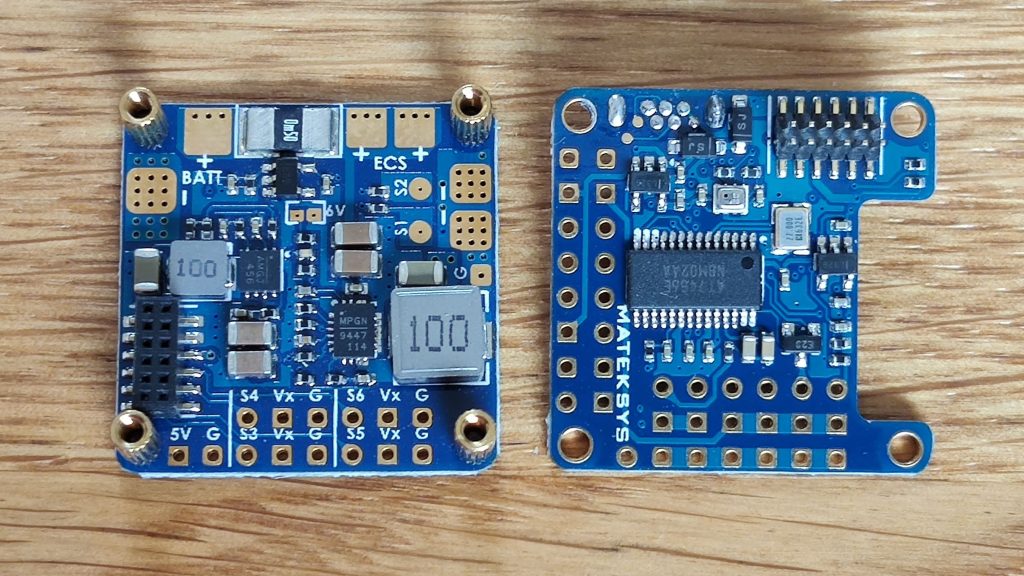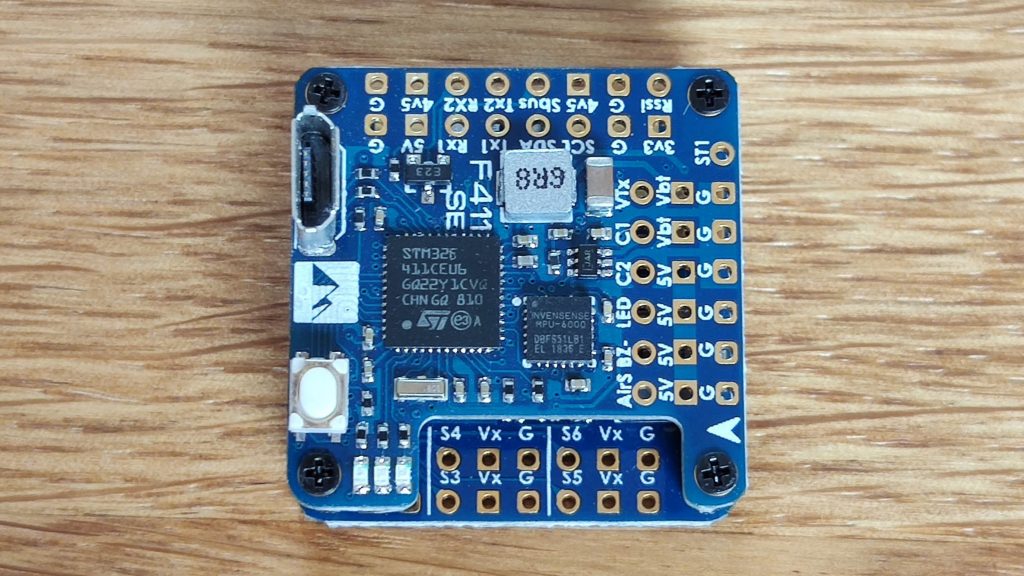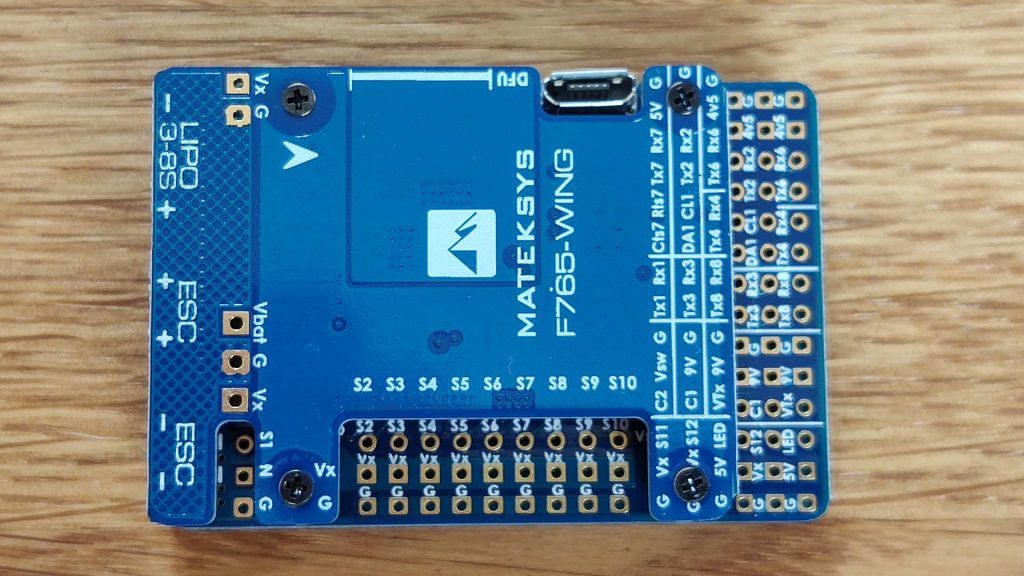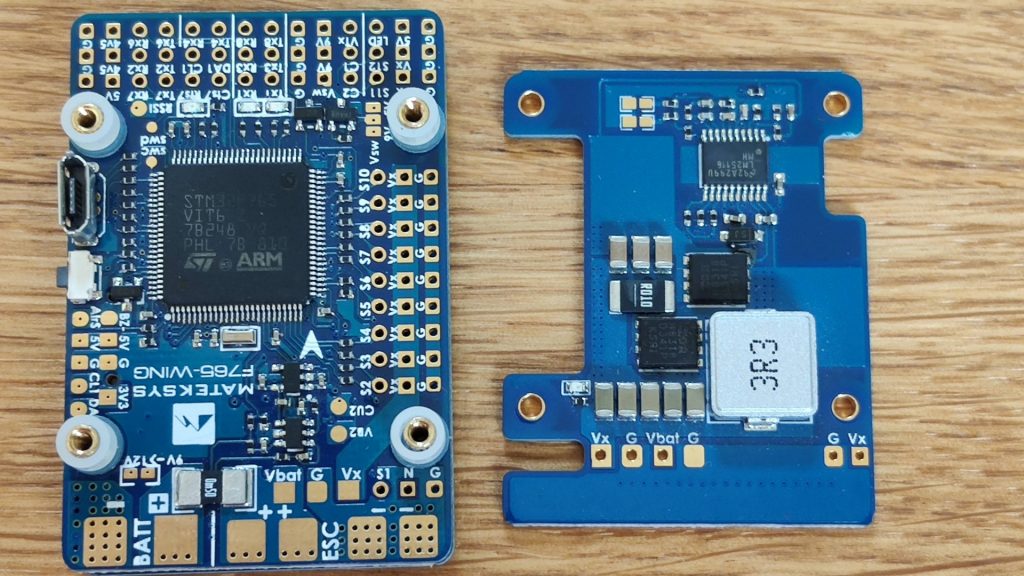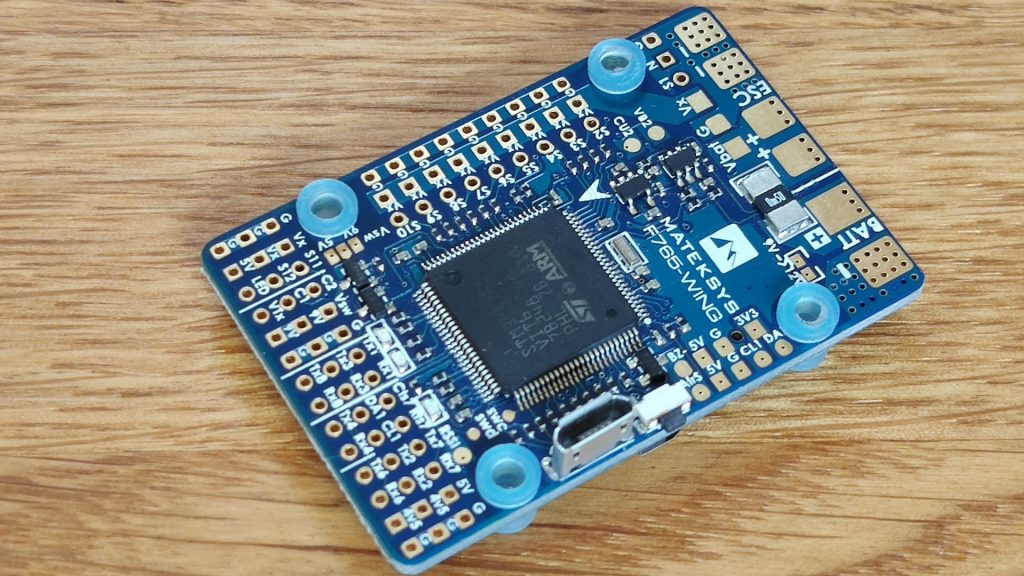-
DIY 3D Printing Filament Dryer / Dehumidifier / Dry Box
The wet filament is a bad filament. 3D printers hate them since during melting the filament water that it contains turns into steam, expands and creates holes, bulges and other distortions and problems in a print. So filaments are more sensitive to moisture: TPU or Nylon. But even PLA might absorb water if it is kept in a humid environment for a long time. The solution is simple: DIY filament dehumidifier (also knows as filament dryer or dry box) made from the storage box, hygrometer, silica gel as a water absorbent and some window seals. The results are amazing!
Read more... -
Bench power supply Yihua PS-3010DF
Some time ago I started to feel a need to have a bench power supply. Not laboratory-grade, but something that can deliver both some volts and amps. Of course with overcurrent protection. Aliexpress is full of such a power supply units and at the end, I've decided on Yihua PS-3010DF with 30V voltage and 10A max current.
My initial thoughts are:
- On the outside, it looks and feels pretty solid
- You can power a drone on a workbench from it. Even with motors running!
- Current limiting works and it can replace a smoke-stopper
- Too bad you can not set max current before turning this thing on
- It only shows current current, not the limit
- USB is a nice touch
- Teardown in a few weeks :)
-
Mateksys F411-Wing SE - even smaller F411-Wing
The second half of 2019 belongs to Mateksys? Hard to tell, but they seem to be pulling new interesting flight controllers out of their sleeves! Only yesterday I showed you first images of Mateksys F765-WING and today it is time for Matek F411-WING SE!
Mateksys F411-WING SE is an improved version of F411-WING from the last year. Still the same CPU and "only" 2 UART ports. But this time it's even smaller thanks to "sandwich style" build.
- STM32F411 CPU
- build in PDB with current sensor and BECs
- 2 motor outputs
- 4 servo outputs
- OSD
- BMP280 barometer
- 4 ADC channels for: Vbat, Current, RSSI and AirSpeed
- AirSpeed ADC has a voltage divider and analog APM Pitot tubes can be connected directly to this input
- Switchable dual camera input: C1 and C2
Now the best part: it is only 8.5g! Super lightweight, perfect for small airplanes and gliders!
Read more... -
Matek F765-WING - flight controller on steroids!
This is preproduction sample, some details of Mateksys F765-WING might change in the final version that will hit the market!
Looks like Mateksys did it again, and the next flight controller in WING family will be one again the beefiest flight controller around! What's new? A lot. It's still the same format as F405-WING and F722-WING, but this time, the top plate is not only a plate. It holds 8A continuous (10A burst) BEC that you have to connect with wires to the main plate. From what I've been told, the step-down chip itself can hold 20A continuous, but due to limited space, the main inductor/choke limits it to 10A only. Well, only is probably not the best world ;)
The brand new is also CPU. Now it is beefy STM32F765 in LQFP-100 package. Beefy because it has 2MB of flash and 512kB of RAM. And thanks to the big package, a lot of peripherals could be broken out:
- 12 PWM outputs
- 8 UARTs
- 2 I2C
- SPI
- 6 ADC (Vbat, Current, Vbat2, Current2, RSSI, AirSpeed)
- Micro SD
- camera switcher
- switchable 5V/9V output
Compatible software: INAV, Betaflight and (probably) ArduPilot.
Read more... -
European Union drone laws after June 2020
Starting from June 2020, unified European Union drone laws will become a reality. European published two regulations 2019/945 and 2019/947 that describe the unified rules that all member countries will have to implement before June 2020. Some say that drone hobby is dead in EU and corporations are winning. I took a few hours of my life and I've read both documents and here is a short summary.
Drone registration
No, there will be no drone registration forced by the EU itself. Only a very specific class of drones (UAS they are called in official nomenclature) operating in "Certified" operations category will have to be registered and certified by local authorities. All hobby drones and airplanes operate in "Open" and "Specific" category and do not have to register
Pilot registration, course, and test
On the other hand, pilots that want to fly drones heavier than 250g (commercial or self-made DIY style) will have to register, take an online course and pass an online test to receive a certificate. From the documents we know that:
- the test will have 40 multiple choice questions
- questions will be distributed between the following subject: air safety, airspace restrictions, aviation regulation, human performance limitations, operational procedures, UAS general knowledge, privacy and data protection, insurance, security
- certified pilot will receive a unique identifier
- pilots who want to operate in Open.A2 class will have to:
pass an additional test of 30 multiple answer question in following subject: meteorology, UAS flight performance, technical and operational mitigations for ground risk
perform a self-practical straining under the rules of Open.A3 that will include the following scenarios: weather conditions, the performance of the unmanned aircraft, segregation of the overflown area - no extra tests will be required for operations in category Open.A1 and Open.A3
Commercial UAS
Commercial drones and unmanned airplanes (sold in the European Union) will be categorized into the following categories:
- C0 - sub 250g class limited to 120m altitude (relative to take-off point), 24DC voltage and 19m/s level flight speed
- C1 - sub 900g class limited to 120m altitude (relative to take-off point), 24DC voltage and 19m/s level flight speed. It has to have battery monitoring and a transponder transmitting its serial number, pilot ID and additional flight parameters. On top of that, it has to meet noise level limits and have to have a space awareness system
- C2 - sub 4kg class limited to 120m altitude (relative to take-off point), 24DC voltage. It has to have battery monitoring and a transponder transmitting its serial number, pilot ID and additional flight parameters. On top of that, it has to meet noise level limits and have to have a space awareness system and position lights
- C3 - sub 25kg class limited to 120m altitude (relative to take-off point), 24DC voltage and longer dimension cannot be more than 3m. It has to have battery monitoring and a transponder transmitting its serial number, pilot ID and additional flight parameters. On top of that, it has to meet noise level limits and have to have position lights. It has to have a failsafe system that will safely land it in case of lost signal. It can be capable of autonomous flight.
- C4 - sub 25kg class, it can not do an autonomous flight.
Privately built drones and airplanes
DIY, self-made, privately built drones and airplanes that are intended to be used by the builder does not have to be classified like commercial ones. There is no voltage, electric only, altitude or transponder requirements like in classes C0-C4. DIY (so including hobby) drones and airplanes are allowed to operate in Open.A1 is they weight below 250g or Open.A3 is weight above 250g.
This means, if you built your own RC model, you can still fly it, do not have to register or actually meet any regulations that commercial drones have to meet even if your own model seems to be close to any of them.
Important: assembling a ready-to-use kit does not count as DIY! Ready to use kits have to be categorized as C0-C4 by manufacturer/seller/distributor.
Categories of operations
There are 3 main categories of operations (flights):
- Open - can be VLOS only and is limited to 120m of relative altitude. Open flight does not have to be registered and can be performed by C0-C4 classes and DIY models
- Specific - can be BVLOS (FPV) but needs permission from authorities or LUC certificate. A flying club can share its LUC certificate with its members
- Certified - reserved for dangerous operations: flying over people, transporting people, transporting dangerous materials. Needs an agreement from authorities and certified UAS
A Open category where most hobby flights will be performed is divided into:
- Open.A1 UAS.OPEN.020 - it is not allowed to fly over crowds, allowed to fly over a single uninvolved person, VLOS. Reserved for UAS classes C0, C1, and DIY below 250g
- Open.A2 UAS.OPEN.030 - at least 30m distance (that can be lowered to 5m in special cases) from uninvolved persons. Reserved for C2 UAS class
- Open.A3 UAS.OPEN.040 - not flying over uninvolved people at all, "be conducted in an area where the remote pilot reasonably expects that no uninvolved person will be endangered within the range where the unmanned aircraft is flown during the entire time of the UAS operation". All flight with UAS from classes C2, C3, C4 and above 250g DIY build have to be in A2 category
Current commercial drones after June 2020
All current commercial drone available on the market (DJI Spark, Mavic Air, Mavic Pro, Phantom, and another ready-made) that are not classified as C0-C4, will be allowed to fly after June 2020 on the same regulations as DIY build.
- All current commercial drones below 250g will be limited to Open A1
- All current commercial drones above 250g will be limited to Open A3
New regulations versus FPV
Unfortunately, the new EU drone regulations do not allow for FPV flights. Not even sub 250g is allowed FPV under Open category flights. FPV is possible only in Specific flight category and it requires permission from authorities or a LUC certificate. We have to wait for national, member countries, regulations to know the details.
There is a hope tho. In the second half of 2019, there will additional talks about two new Open flight classes:
- Urban VLOS - that will allow flying over crowds that consists of involved and participating people
- Rural BVLOS - Operations in sparsely populated areas using visual observers and below 120m
Rural BVLOS looks like the most interesting proposal. All my flights are performed in sparsely populated areas!
Read more... -
NEW European Union Drone Laws - a complete guide for 2020 changes
European Union is regulating drone and RC airplanes law and starting from June 2020 all member countries will have to align its laws to meet EASA regulations 2019/945 and 2019/947. According to them:
- drone pilots will have to register and pass an online test
- commercial drones will be classified into classes: C0, C1, C2, C3, and C4
- DIY homemade drones and airplanes are allowed
- Operational classes: Open, Specific and Certified
- rules for DJI drones
- Open A1, Open A2, and Open A3
- Transponders, position lights, failsafe, MTOW and speeds
-
Low Pass Filter Experiments
All flight controllers we use in RC hobby (FlightOne, Betaflight, INAV, Pixhawk, dRonin, and all the other) use low pass filters. What does a low pass filter do? It passes low-frequency components of a signal (below cutoff frequency) but attenuates high-frequency signal components (above the cutoff frequency).
Since it's hard to make a visualization of this process with a software LPF filter, let's make an analog equivalent using a resistor and capacitor and connect all of that to signal generator and oscilloscope.
Read more... -
Jumper T16 Review - better than FrSky?
Jumper T16 RC transmitter messed around in the RC hobby in the last few weeks. FrSky wants to ban it since according to them it's a clone of FrSky X10 (bullshit by the way). The question is: is Jumper T16 a good radio transmitter worth the money and what's more important, is it a real competition for FrSky Q X7, X9D Taranis and X10. The answer is quite simple: Jumper T16 is a good radio but everything else is a little complicated. Let's do the review then!
Read more... -
Impedance Matching 101
Why do we match the impendance? And what the heck the impedance really is? 50Ohm, 75Ohm, low impedance, high impedance, reflections and all that crap that normal people usually ignore. Nobody said that we are "normal" over here so let's take a look at this whole input/output impedance matching business.
Read more... -
INAV 2.2 - what's news, what changed, the most important features
INAV 2.2 is almost ready. The list of changes is long, those are the most important ones
- STM32F7 optimizations. F7 flight controllers are now as fast as F4
- Better airmode handling for multirotors
- Betaflight D_min equivalent called D-Boost
- Iterm Relax
- Smart Audio 2.1
- New Mission Planner
- Continue mission on failsafe
- waypoints in CLI
- stick arming removed
- DSHOT compatibility fixes
- Blackbox servo logging
- Emergency arming
- G force in OSD
- OpFlow and Surface mode improvements
- Virtual airspeed (pitot) sensor

I'm Paweł Spychalski and I do things. Mainly software development, FPV drones and amateur cinematography. Here are my YouTube channels:

